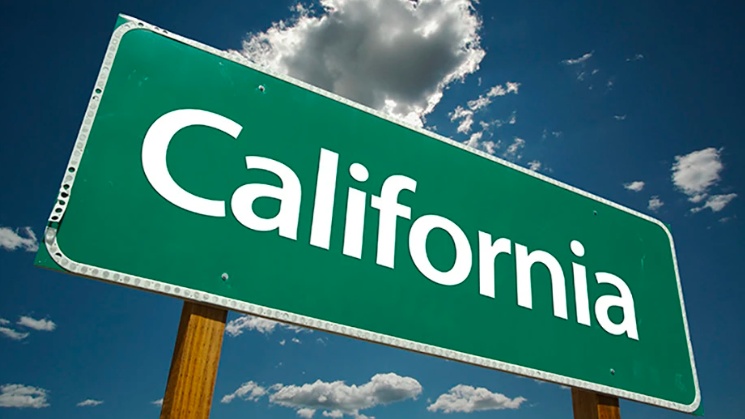California Recycled Plastic Packaging Regulations: Manufacturers' Registration Underway
In August 2025, California’s Extended Producer Responsibility (EPR) program for packaging saw new developments, with producer registration now underway. Companies selling packaged goods in California can complete their EPR registration through the Circular Action Alliance (CAA).
CAA is the organization responsible for implementing the Extended Producer Responsibility (EPR) program for paper and packaging in California. It has now opened the updated registration portal for all producers subject to California’s Plastic Pollution Prevention and Packaging Producer Responsibility Act (Senate Bill 54, or SB 54). CAA encourages relevant producers to complete their registration by September 5.

CAA states that producers selling, distributing, or transporting single-use packaging in California are likely subject to the Act, and even if they have previously registered with CAA, they need to re-register this time. In addition to registration, CAA also plans to initiate a producer supply reporting period, with the report deadline set for November 15th.
Jeffrey Inch, Senior Vice President of Producer Services at CAA in Washington, stated: “In 2025, a key task in California will be establishing registration and reporting processes to help producers meet upcoming EPR obligations. We will fully support producers, helping companies complete registration and confidently report baseline data for 2023. By choosing ‘PRO Reporting’ during registration, producers’ obligations in California can also be streamlined.”
When registering in California, producers need to choose between PRO reporting and self-reporting. If PRO reporting is selected, the CAA will handle registration, data submission, and compliance work with the California Department of Resources Recycling and Recovery (CalRecycle). If self-reporting is chosen, producers must register and report directly to both CalRecycle and the CAA. The CAA recommends that producers choose the former.
Yingqi added, "Manufacturer registration and reporting data are crucial for developing California's packaging EPR program, determining the source reduction baseline, and guiding program implementation. Completing registration and reporting by November 15 will enable the CAA to better adjust the program to meet manufacturers' needs."
After registration, if assistance is needed, producers can visit the "Help & Support" tab on the Producer Portal or contact the CAA team by emailing producer.support@circularaction.org.
SB 54 aims to reduce waste from single-use packaging and plastic tableware. In 2022, California Governor Newsom signed the bill into law. Since then, numerous industries, environmental organizations, regulatory agencies, and legislators have been working on how to implement the bill.
Earlier this year, Governor Newsom directed CalRecycle to restart the regulatory process to ensure fair implementation. In May, the revised draft regulations were released, eliciting varied responses from stakeholders, legislators, and industry groups. California State Senator and primary sponsor of SB 54, Ben Allen, stated on May 19: "While the new draft makes improvements in certain areas, helping producers implement the program more efficiently, we are concerned about some provisions that appear to conflict with the law. In particular, the proposed regulations seem to exempt certain products that clearly fall within the scope of the program." In July, the latest economic assessment released by CalRecycle indicated that the EPR law could generate a net benefit of $32 billion and reduce 1.9 billion pounds of plastic waste.
These series of measures are of great significance to the recycled plastics industry. With the advancement of regulations, the demand for recycled plastics is expected to increase. To fulfill Extended Producer Responsibility (EPR) obligations, manufacturers may adopt more recycled plastics in packaging production, which will drive the development of the recycled plastics market, promote the recycling and reuse of plastic waste, reduce dependence on virgin plastics, and have a positive impact on environmental protection and resource recycling.
【Copyright and Disclaimer】The above information is collected and organized by PlastMatch. The copyright belongs to the original author. This article is reprinted for the purpose of providing more information, and it does not imply that PlastMatch endorses the views expressed in the article or guarantees its accuracy. If there are any errors in the source attribution or if your legitimate rights have been infringed, please contact us, and we will promptly correct or remove the content. If other media, websites, or individuals use the aforementioned content, they must clearly indicate the original source and origin of the work and assume legal responsibility on their own.
Most Popular
-

EVA Morning Prices on September 12: Most of the Market Holds Steady, Highest Rise of 50 Yuan
-

Domo Chemicals Files for Bankruptcy Protection in Germany! B. Braun Launches New Supply Assurance Program
-

Vynova's UK Chlor-Alkali Business Enters Bankruptcy Administration!
-

[PET Weekly Outlook] Polyester Bottle Chips Expected to Oscillate and Warm Up with Costs Today
-

Case Study | Clariant AddWorks™ Additives Solve Plastic Yellowing Problem






